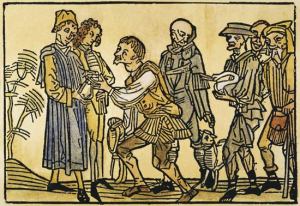
The Renaissance. Ah, twas a magical time of advancement in both the arts and the sciences. During the dark times of the Middle Ages (after the fall of the Roman Empire), people were oppressed by the Holy Catholic Church as well as “nobles” that used the feudal system to get rich while keeping lowly peasants poor and ignorant (not to mention the black plague). But all bad things must come to an end. And they did.
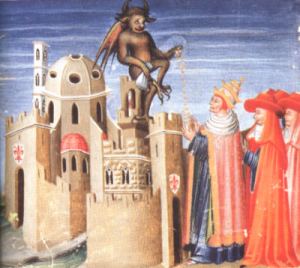
When people think of the Renaissance period, dozens of names come to mind: Galileo, Da Vinci, and Michelangelo (yes, they‘re mostly Italians) to name a few. Nowadays, the term “Renaissance Man” refers to an individual who shows aptitude in a multitude of subject areas. Perhaps today’s Renaissance Men (and Women) would have also fit in with the likes of the great masters.
While visiting Italy (Rome & Florence), I took the opportunity to admire some of the works of these men – one in particular. Michelangelo di Lodovico Buonarroti Simoni (1475–1564) was a painter, sculptor, poet, architect, and engineer (damn!), who is probably most famous for creating the statues of David and the Pieta, as well as the painting of the Sistine Chapel (in Vatican City). I saw more of his works than these (including the Basilica of St. Peter which he helped design), but for the purposes of this article, I would simply like to give my impression of his three major works.
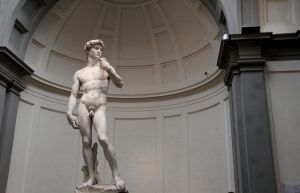
- David – He resides in the Galleria dell’Accademia in Florence and is pretty much the only reason to go to the museum. Like all museums in Italy (and I’m assuming France as well), you have to wait in long lines just to get in and once inside, the rooms are over-crowded with people. One of the more pleasant aspects of going to see David were the art students who had sketch pads and pencils. Overall, David met my expectations (particularly since we weren’t originally going to visit the Accademia). He is positioned in a great location with fantastic space and lighting to maximize his visibility (I think the curators did that to show off his naughty bits).
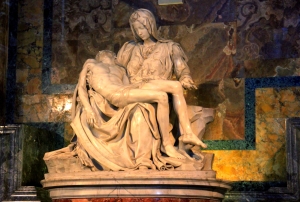
- The Pieta – Stumbling upon this masterpiece was a bit of a surprise because I hadn’t researched where it was, and didn’t know to look for it inside St. Peter’s Basilica. While wondering around the immense church, I realized what it was. The statue was just sitting in an alcove, minding its own business. A few tourists were taking photos, but most were ignoring it (most likely ignorant of what it was). I found the positioning of this one perfect for the mood the work conveys. A wave of solemnity with a tinge of loneliness washed over me as I stood before Mary holding the body of her crucified son.
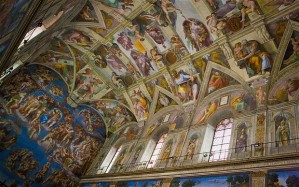
- The Sistine Chapel – Unfortunately, the Sistine Chapel failed to meet my expectations. As reported in a previous entry, we were herded into another over-crowded room with men shouting through loudspeakers to be respectful. And while it was possible to stand directly beneath many of the scenes and stare straight up for any length of time we wanted, the magnificence of the work was lost to the hustle and bustle of the mismanaged museum.
Whether or not the works of this great artist ended up where they should be, it was obvious within seconds that they were the work of a master craftsman. To have a statue you sculpted residing in a building you designed is a feat unto itself. In my life, I have always striven to be a Renaissance Man. And I hope that one day, people will consider me one (fingers crossed, lol).
Hasta La Proxima…
-Justin
Great blog. Good info, good length, good subject.